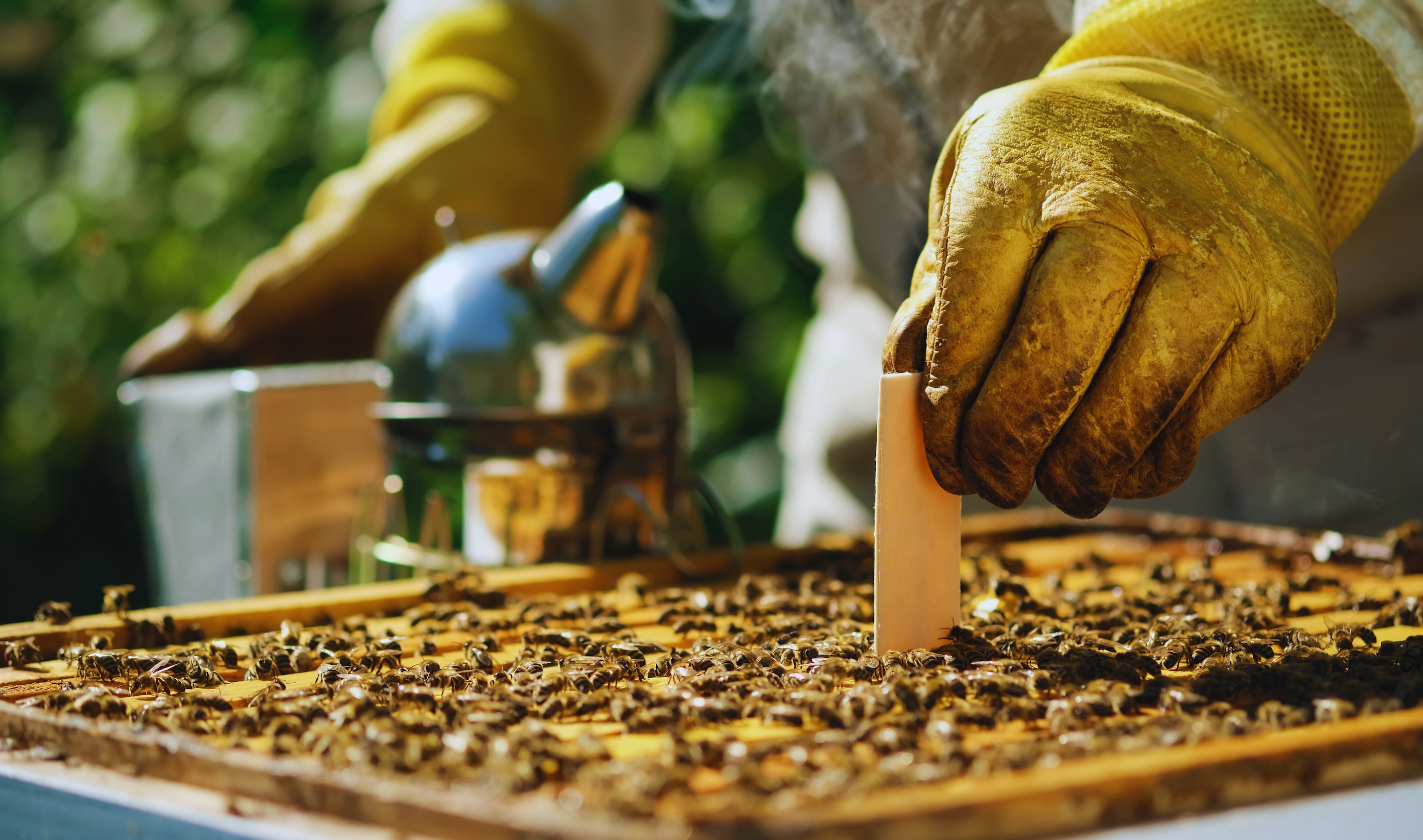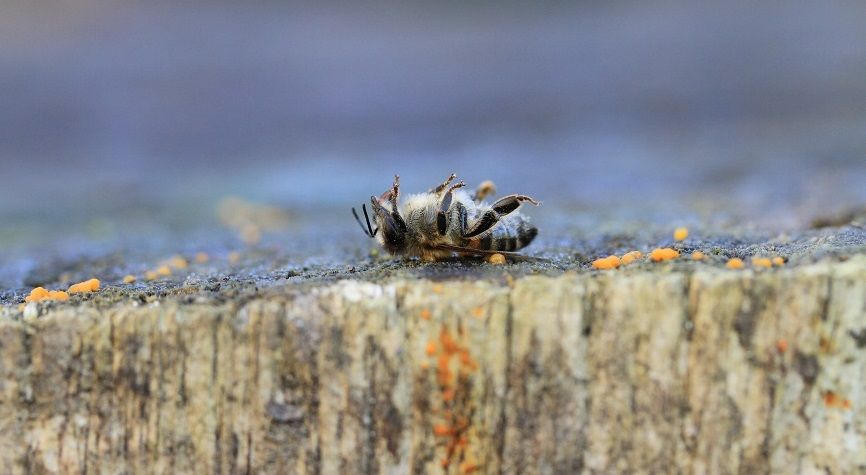Varroa Mite Treatment Lengths in Australia: A Complete Guide to Timing and Duration
- Treatment duration can be flexible - from 24 hours to 8 weeks depending on your management strategy
- Australian conditions require different timing than New Zealand due to our 11-month honey season
- Short treatments work best as part of an integrated control program
- Regular monitoring helps you choose the right treatment length for your situation
Understanding Varroa Treatment Duration in Australian Conditions
Welcome, fellow bee enthusiast! Managing varroa mites effectively means understanding that treatment duration isn't a one-size-fits-all solution. While many beekeepers think they need to stick to standard 8-week treatment periods, the reality is much more flexible and depends on your specific situation and management goals.
Australia's unique beekeeping environment - with our extended 11-month honey season and diverse climate zones - means we need to adapt treatment strategies that work in other countries. This guide will help you understand how to choose the right treatment duration and timing for your hives.
Why Australian Conditions Require Different Approaches
Dr. Mark Goodwin's research highlights important differences between New Zealand and Australian beekeeping conditions. New Zealand's temperate climate allows for clear seasonal breaks, making it easier to time treatments. In contrast, most of Australia experiences extended honey flows and warmer temperatures that affect both bee behavior and mite reproduction cycles.
Understanding Treatment Duration Options
Varroa treatments can range from very short applications (24 hours) to extended periods (8+ weeks). The key is understanding when each approach works best:
Short-Term Treatments (24 hours - 2 weeks)
Short treatments work well when you need to reduce mite loads quickly without long interruptions to honey production. These are most effective when mite levels are moderate and you're using them as part of a rotation strategy.
Medium-Term Treatments (3-6 weeks)
Medium-length treatments offer a good balance between effectiveness and practicality. They're often ideal for hobbyist beekeepers who want reliable results without the complexity of very short treatments.
Long-Term Treatments (6-8+ weeks)
Extended treatments are typically used during brood breaks or when mite levels are very high. They provide the most thorough control but require longer periods without honey production.
The Integrated Control Program Approach
Rather than relying on single long treatments, many successful Australian beekeepers use integrated control programs. This means using multiple shorter treatments throughout the year, combined with other management practices like drone comb removal and regular monitoring.
An integrated approach offers several benefits:
- Less disruption to honey production
- Reduced risk of treatment resistance
- Better adaptation to local conditions
- More cost-effective for larger operations
Building Your Integrated Program
A successful integrated program typically includes:
| Program Component | Timing | Duration | Purpose |
|---|---|---|---|
| Spring Treatment | September-October | 2-4 weeks | Reduce mites before main buildup |
| Mid-Season Treatment | January-February | 24 hours - 2 weeks | Quick knockdown during peak season |
| Autumn Treatment | April-May | 6-8 weeks | Thorough treatment before winter prep |
| Winter Treatment (if needed) | July-August | 4-6 weeks | Clean up during minimal brood period |
Timing Treatments in Australia's Extended Season
One of the biggest challenges Australian beekeepers face is finding the right time for treatments when honey flows continue for most of the year. The key is identifying windows of opportunity when treatment will be most effective with minimal impact on production.
Ideal Treatment Windows
Look for these situations when planning treatments:
- Natural breaks in honey flow
- Periods of reduced brood rearing
- Times when mite reproduction is highest
- Before and after main honey seasons
A Step-by-Step Approach to Choosing Treatment Duration
Follow this systematic process to determine the right treatment length for your situation:
Step 1: Monitor Your Mite Levels
Use alcohol wash, sugar shake, or sticky board monitoring to check your mite levels. Record the results and compare them to action thresholds. Higher mite levels typically need longer treatments, while lower levels can often be managed with shorter applications.
Step 2: Check Your Honey Flow Status
Identify current and upcoming honey flows in your area. Consider how long you can afford to have treatments in place without affecting honey production. Short flows might allow longer treatments, while continuous flows favor shorter applications.
Step 3: Review Your Treatment History
Look at what treatments you've used recently and their effectiveness. Consider resistance management and the need to rotate between different treatment types. Plan your duration to fit with your overall resistance management strategy.
Step 4: Consider Your Management Capacity
Be honest about how much time you can dedicate to monitoring and management. Short treatments often require more frequent monitoring, while longer treatments need less hands-on time but more planning.
Step 5: Make Your Decision and Plan Follow-up
Choose your treatment duration based on all the factors above. Plan your follow-up monitoring to check effectiveness and determine when the next treatment might be needed. Keep good records to improve your decision-making over time.
Common Duration Strategies for Different Situations
Here are proven approaches for common scenarios Australian beekeepers face:
High Mite Levels (>3% infestation)
Use longer treatments (6-8 weeks) or multiple shorter treatments (2-3 treatments of 2-4 weeks each). Focus on thorough control rather than minimizing production impact.
Moderate Mite Levels (1-3% infestation)
Medium-length treatments (3-6 weeks) often work well. You can also use shorter treatments if you can monitor closely and retreat if needed.
Low Mite Levels (<1% infestation)
Short treatments (24 hours to 2 weeks) can be effective, especially as part of a prevention program. Consider whether treatment is needed at all.
Continuous Honey Flow Areas
Focus on very short treatments (24-48 hours) that can be repeated as needed. Build an integrated program with multiple short applications throughout the year.
Monitoring During and After Treatment
Regardless of treatment duration, monitoring is essential for success. Here's what to watch for:
During Treatment
- Mite drop on sticky boards
- Bee behavior and stress signs
- Treatment integrity (strips in place, not damaged)
- Weather conditions affecting effectiveness
After Treatment
- Final mite counts to assess effectiveness
- Colony recovery and normal behavior
- Brood pattern and queen performance
- Timeline for next monitoring or treatment
Economic Considerations for Treatment Duration
Treatment duration affects both costs and income. Consider these economic factors:
Direct Costs
- Treatment product costs
- Labor time for application and monitoring
- Travel costs for multiple visits
Opportunity Costs
- Lost honey production during treatment
- Delayed expansion or other activities
- Time spent on treatment vs. other priorities
Risk Costs
- Colony loss from untreated varroa
- Reduced colony strength and productivity
- Spread of viruses and other problems
Regional Variations Across Australia
Different Australian regions may favor different duration strategies:
Tropical North
Year-round brood rearing and honey flows favor very short treatments (24-48 hours) repeated regularly. Long treatments are rarely practical.
Temperate South
More seasonal variation allows for longer treatments (6-8 weeks) during winter or natural flow breaks. Medium treatments work well in shoulder seasons.
Inland Areas
Variable and unpredictable flows require flexible approaches. Be prepared to adjust duration based on seasonal conditions.
When to Seek Professional Advice
Consider consulting with experienced beekeepers or extension officers when:
- Mite levels remain high despite treatment
- You're unsure about resistance issues
- Colony losses suggest treatment problems
- You're planning major changes to your program
- Local conditions are unusual or challenging
Summary of Key Takeaways
- Treatment duration should be flexible and based on mite levels, honey flows, and your management capacity
- Short treatments (24 hours to 2 weeks) work well in integrated programs and continuous flow situations
- Medium treatments (3-6 weeks) offer good balance for most hobbyist beekeepers
- Long treatments (6-8+ weeks) are best for high mite levels or clear seasonal breaks
- Regular monitoring helps you choose the right duration and assess effectiveness
- Economic factors including lost honey income should influence duration decisions
- Regional climate differences across Australia require adapted strategies
Ready to Implement Effective Varroa Management?

Ecrotek Australia gives you the tools and knowledge you need for effective varroa management. From detection kits to treatment options, we're here to help you keep your colonies healthy and productive.
Shop Varroa ProductsOr contact our team today for personalised advice on varroa management solutions for your beekeeping operation.


